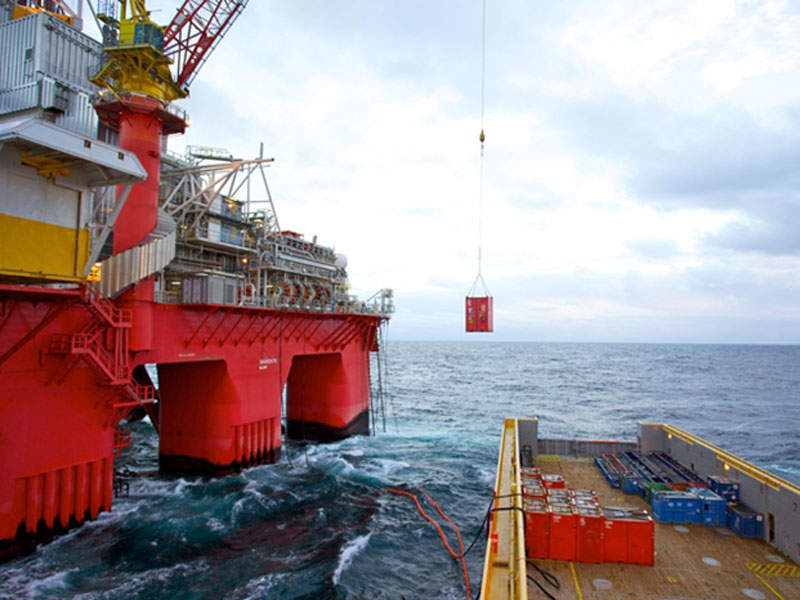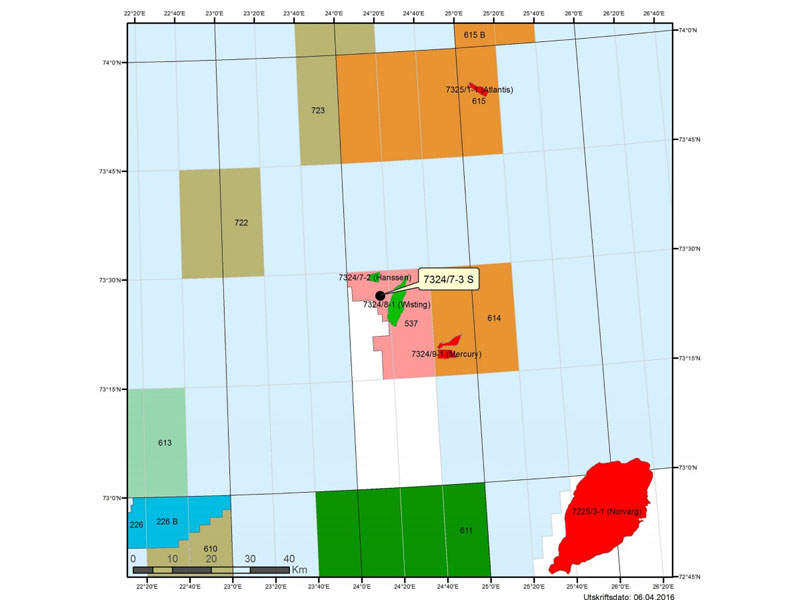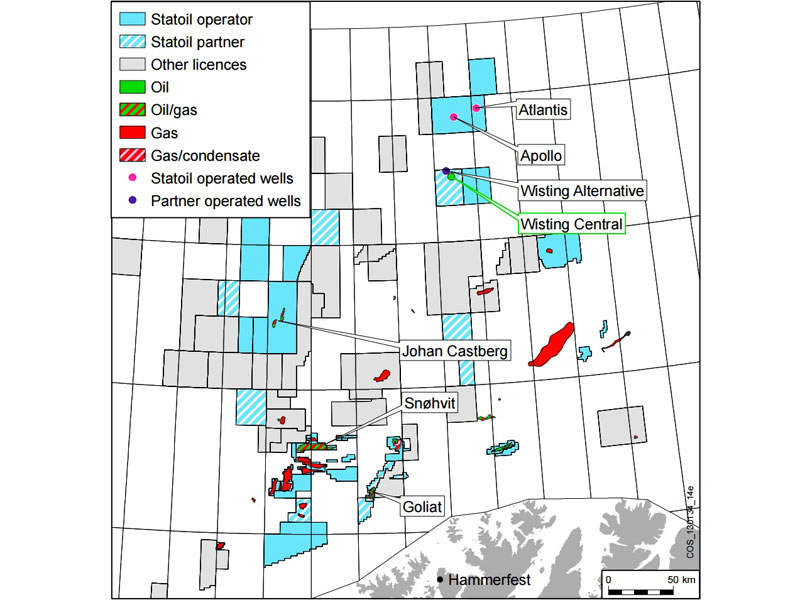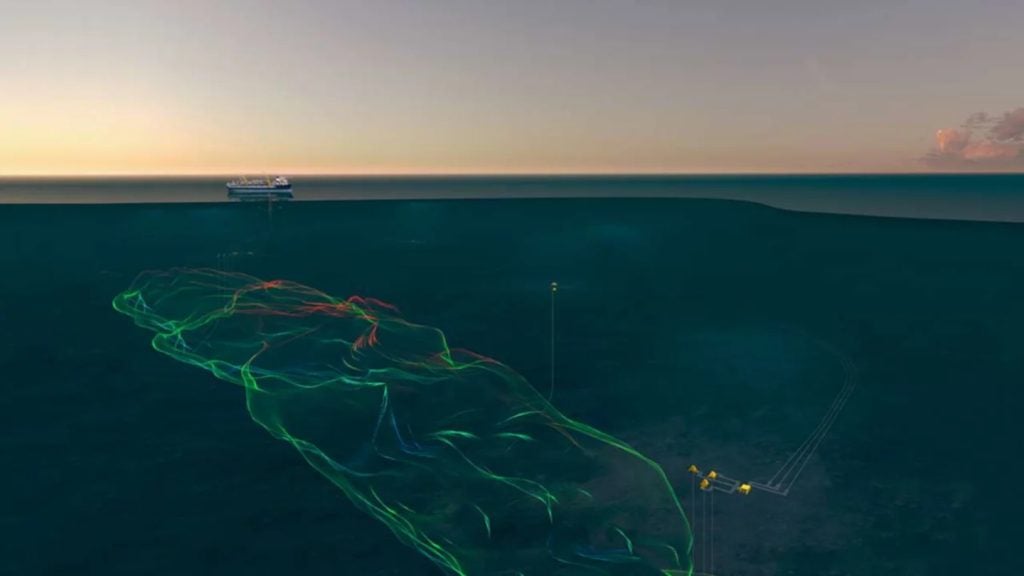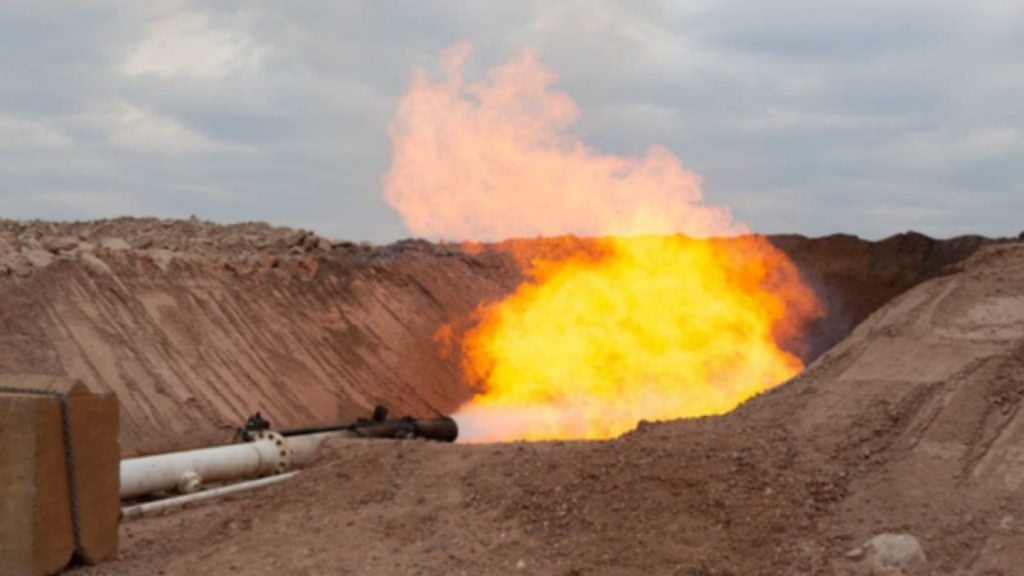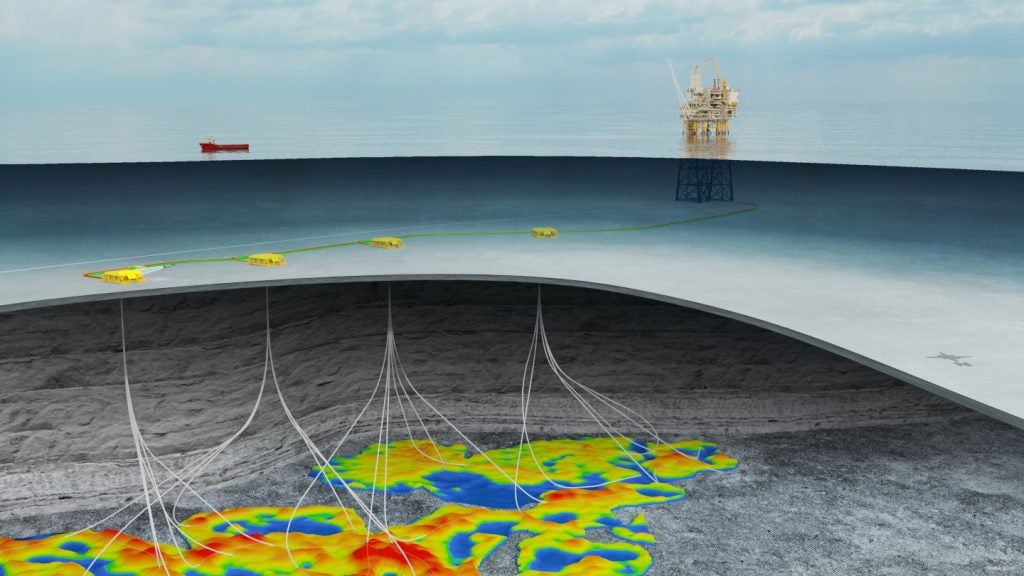
The Wisting oil discovery is located in the production license PL 537 in the northern part of the Barents Sea, Norway, in a water depth of 402m.
OMV Norge, the operator of the field, has a 25% share in the license, while its joint venture partners include Petoro (20%), Idemitsu Petroleum Norge (20%) and Statoil (35%).
Wisting oil discovery
The Wisting field was discovered in September 2013 during the drilling of the Wisting Central exploration well 7324/8-1; the project entailed the drilling of the well to a depth of 905m using a Leiv Eiriksson semi-submersible rig.
The exploration well encountered approximately 60m of net light oil pay in Middle to Lower Jurassic sandstones.
Geology and reserves in the Barents Sea
Wisting is the first field to have been uncovered in the Hoop-Maud Basin of the Barents Sea. The discovery contains reserves in a shallow reservoir located 250m below the seabed.
The field is estimated to contain between 200 million and 500 million barrels of oil equivalent.
Exploration and appraisal drilling on Wisting oil discovery
The Wisting field area has been divided into six sections: Wisting Central East, Wisting Central West, Wisting Central South, Hanssen, Hassel, and Bjaaland.
Exploration has confirmed hydrocarbons in the Wisting Central East and Hanssen segments.
The Wisting Alternative well (7324/7-1S) was drilled in October 2013 following the discovery of Wisting. The well was drilled to a depth of 2,452m by the Leiv Eiriksson semi-submersible rig to prove reserves in the Middle Triassic Kobbe formation.
The well encountered poor quality sandstones of the Kobbe and Snadd formation, and traces of hydrocarbons in the Snadd formation. Extensive data and sampling was carried out following the completion of drilling.
A third well, 7324/8-2 Hanssen, was drilled by the Transocean Barents drilling rig in order to prove reserves in the Middle to Late Jurassic Realgrunnen formation; the well encountered an oil column of 20m.
OMV completed the drilling of the Wisting Central II appraisal well (7324/7-3 S), using the Transocean Spitsbergen semi-submersible rig, in April 2016.
It is the fifth well to be drilled at the production licence, and was drilled to confirm the presence of hydrocarbons in the Wisting Central South and Central West segments of the field.
The appraisal well reached a total depth of 2,354m, with a horizontal section measuring 1,402m, and encountered sandstones in the Stø and Fruholmen formations. A production test carried out in the Stø formation achieved flow rates of more than 5,000 barrels of oil equivalent a day (boe/d).
Wisting field development details
OMV is currently considering a number of development options for the field, mostly regarding the Wisting Central East, Wisting Central West, and Wisting Central South segments.
A concept study for FPSO design is ongoing and scheduled for completion by 2018. The front-end engineering design (FEED) and plan for the development are expected to be completed between 2018 and 2020, and production is expected to commence in the early 2020s.
Contractors involved in the Wisting drill
Sevan Marine was awarded a contract to study a cylindrical hull FPSO design for the development of the field in September 2016.
AGR was responsible for assisting OMV in drilling the 7324/8-1 and 7324/7-1S wells.
Exploration in the Greater Wisting area
Exploration activities in the Greater Wisting area have yielded just one additional prospect, Hanssen. Other wells, including Apollo, Atlantis and Mercury, have not encountered any reserves.
The operators, however, are positive about the potential of the area and are planning to undertake further exploration activities targeting the Hanssen and Bjaaland prospects.

